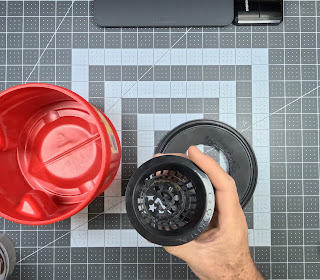Plastic Coffee Cans for Hydroponic Gardening
Reusing Plastic Coffee Cans with Lids for Hydroponic Gardening
Hydroponic gardening is a game-changer for growing plants efficiently without soil. If you're looking for an eco-friendly and cost-effective way to start or expand your hydroponic garden, consider reusing plastic coffee cans with lids. These durable, lightweight containers are perfect for creating hydroponic planters that are easy to set up and maintain. This guide explores how to repurpose plastic coffee cans for hydroponic gardening and why it’s a sustainable choice.
Why Use Plastic Coffee Cans for Hydroponic Gardening?
Reusing plastic coffee cans with lids offers multiple benefits for hydroponic gardening:
Durability: Coffee cans are sturdy and can withstand moisture, making them ideal for hydroponic setups.
Cost-Effective: Repurposing coffee cans eliminates the need to purchase new containers, saving money.
Eco-Friendly: By reusing plastic, you reduce waste and contribute to a sustainable environment.
Customizable: Coffee cans can be easily modified to fit various hydroponic systems, including Kratky, DWC (Deep Water Culture), and drip systems.
How to Repurpose Plastic Coffee Cans for Hydroponic Gardening
Materials Needed:
Plastic coffee cans with lids
Recycle Grade #2 HDPE coffee Container Net pots or small mesh baskets
Hydroponic Gardening 3" Net basket Hydroponic nutrients
Nutrient solution for Hydroponic Gardening Growing medium (e.g., clay pebbles or rockwool)
Rock Wool Hydroponic Planting Medium for Seed Seedlings or seeds
Seed To Be Planted Hydroponically Drill or utility knife
Steps to Create Hydroponic Planters:
Clean the Coffee Cans Wash the coffee cans thoroughly with soap and water to remove any residue. Let them dry completely.
Prepare the Lid Drill or cut a hole in the lid of the coffee can to fit the net pot snugly. Ensure the hole is centered and secure.
Assemble the System
Fill the Can with Nutrient Solution Fill the coffee can with a hydroponic nutrient solution, ensuring the solution reaches the bottom of the net pot.
Nutrient solution for Hydroponic Gardening Seal and Monitor Place the lid back on the coffee can. Ensure proper light and temperature conditions for your plants. Refill the nutrient solution as needed.
10 Plant Ideas for Hydroponic Coffee Can Planters
Lettuce
Basil
Spinach
Mint
Cilantro
Cherry Tomatoes
Strawberries
Green Onions
Kale
Herbs like Thyme and Oregano
Customizing Your Hydroponic Planters
Make your coffee can planters visually appealing with these decoration tips:
Paint: Use waterproof acrylic paint to add a pop of color.
Labels: Attach labels to identify each plant.
Patterns: Use stencils or stickers to create unique designs.
Benefits of Hydroponic Gardening with Recycled Coffee Cans
Using coffee cans for hydroponic gardening aligns with sustainability goals and offers practical advantages:
Water Efficiency: Hydroponic systems use less water compared to traditional gardening.
Space-Saving: Perfect for small spaces like balconies or indoor setups.
Low Waste: Reduces plastic waste by reusing coffee cans.
Conclusion
Reusing plastic coffee cans with lids for hydroponic gardening is an innovative and sustainable way to grow your plants. Whether you're cultivating fresh herbs for your kitchen or growing leafy greens, these repurposed containers can help you create a thriving garden with minimal environmental impact. Start your hydroponic journey today and share your success stories with Sustainable Solutions Studio!




















Comments
Post a Comment